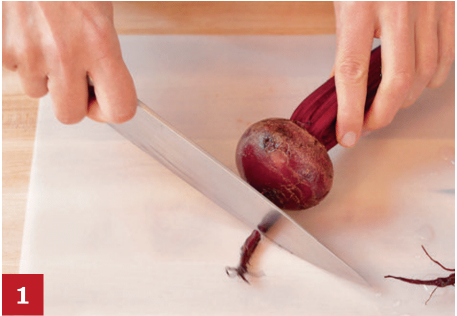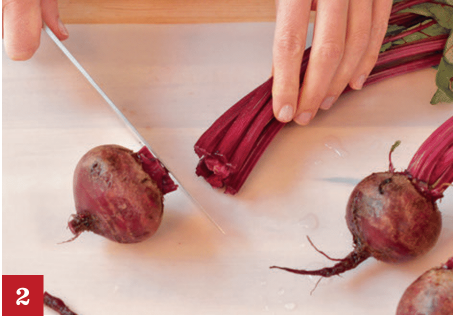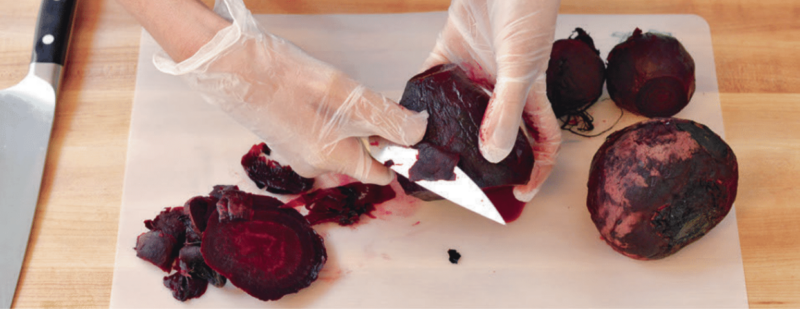Once prepped, beets can be butchered in the same way as other round vegetables.
TO PREP BEETS

First, wash the beets just before you are ready to use them. To remove dirt, gently scrub with a vegetable brush under cold running water or in a bowl of cold water, with a clean rinse to finish. Be careful not to pierce the skin so that beet juice does not escape during cooking.

Next, trim off beet tails with a chef’s knife, keeping a small portion intact.
Then, trim the stems to 1 inch above the root. (For most preparations leave the skins on during cooking to prevent nutrients, sugar, color, and moisture from escaping.)
TO PEEL BEETS

If peeling is called for before cooking, use a vegetable peeler to remove the skin. Next, use a chef’s knife to trim the tail and cut off the top (see To Prep Beets, above). To peel beets after cooking, use your hands or a paring knife (or a combination of the two) to peel off the skins. Most will slip right off when you rub them with your fingers; others might need some encouragement from your knife. Slide your knife just under the skin, preserving as much of the flesh as possible.

About the Book:
Winner, IACP Cookbook Awards for Single Subject and People’s Choice.
The skills of butchery meet the world of fresh produce in this essential, inspiring guide that demystifies the world of vegetables. In step-by-step photographs, “vegetable butcher” Cara Mangini shows how to break down a butternut squash, cut a cauliflower into steaks, peel a tomato properly, chiffonade kale, turn carrots into coins and parsnips into matchsticks, and find the meaty heart of an artichoke. Additionally, more than 150 original, simple recipes put vegetables front and center, from a Kohlrabi Carpaccio to Zucchini, Sweet Corn, and Basil Penne, to a Parsnip-Ginger Layer Cake to sweeten a winter meal. It’s everything you need to know to get the best out of modern, sexy, and extraordinarily delicious vegetables.
Buy the Book
Amazon| Barnes & Noble | Indiebound |Workman




No Comments